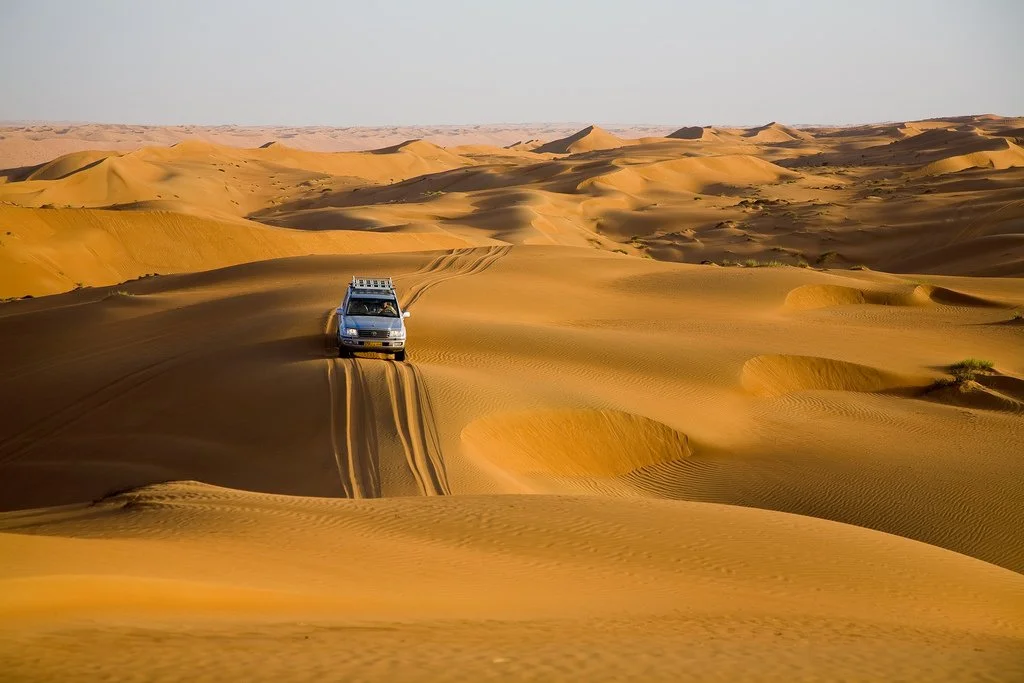From deep canyons and golden dunes to lush rivers and turtle beaches, Oman’s landscape has a lot to offer nature lovers and curious travelers alike.
Wadi Tiwi in the Al Sharqiyah region is named after the nearby Tiwi Village. Andries Oudshoorn. CC BY-SA 2.0.
Despite being made up of mostly desert, the Sultanate of Oman takes great pride in its surprisingly varied flora and fauna. Through the creation of a number of nature reserves, its government has avidly protected the beaches, caves, multicolored sands, deep gorges and even turtle reserves the country has to offer. The delicious local cuisine and the ancient Omani culture that dates back all the way to the Persian Empire is only made better by the beautiful backdrop that the relatively uncelebrated natural beauty of Oman provides.
Home to just over five million people, the Sultanate of Oman sits on the southeastern coast of the Arabian Peninsula and is home to a largely tribal population of Bedouins. Social customs follow the traditions of Ibādī Islam which, while still quite conservative in comparison to Western culture, has actually allowed a lot more freedom relative to its Middle Eastern neighbors. Despite the continued observance of many ancient Islamic holidays, the country’s large desert region is now underlain by countless oil and gas pipelines, which have contributed to its extreme wealth and subsequent modernization.
A Bedouin tribe member leading a camel through the desert. Unknown. CC0.
A perfect example of this are the hundreds of ‘wadis’ across the country. Common in the geographies of Middle Eastern nations, these stream beds often run through deep gorges and valleys that, for the most part, are completely dry and scorched. During the rainy season, the water levels rise and irrigate the surrounding land, often converging into one another as a result and thus creating lush microcosms of greenery in the middle of the desert. Arguably, the most popular wadi among locals is Wadi Bani Khalid, a collection of pools and date palms buried in a rugged ravine in the western tip of the country. Because of its proximity to the capital, Muscat, the pools can get quite busy on the weekends (Fridays and Saturdays) as families flock to this literal oasis to cool off.
The rivers and caves of Wadi Bani Khalid is a local favorite. Ian Sewell. CC BY 2.0.
Not all wadis are known for their rivers, however; Wadi Ghul, also known as “Oman’s Grand Canyon”, sits 200 meters deeper than its American counterpart and provides stunning views of the Hajar Mountain range in the country’s north east. The ravine is known for its “Balcony Walk” which allows hikers to traverse the rim of the canyon and leads to the village of Al Sab, an ancient collection of abandoned stone houses and terraces.
Sunset over Jebel Shams, the deepest canyon in Wadi Ghul. Alfred Knipper. CC BY-SA 2.0.
The eastern region of Oman is home to the Wahiba Sands, a literal ocean of towering sand dunes that turn from pale gold to coppery orange as the sun travels across the sky. The northern dunes are sculpted by the winds to heights of 100 meters in some places, but flatten out towards the south of the sands where they eventually transition into salt flats. This region is home to local Bedouin tribes who host camel-back tours and luxury campsites for visitors who want to experience the desert overnight.
Crossing the Wahiba Sands. Andries3. CC BY-SA 2.0.
On the western coast at the entrance to the Gulf of Oman sits the sandy bay of Ras Al Jinz. The beach is a protected nature reserve where visitors can see greenback turtles swim ashore to nest and lay their eggs all year round. Though special permits are required to visit the beach during the night, these are easily obtainable from local guides who ensure that visitors do not disrupt the turtles as they dig their nests and the hatchlings make their way to the ocean.
A turtle in Ras Al Jinz reserve making its way to the ocean. Richard Packwood. CC BY-NC 2.0.
Off the north coast and further into the gulf, the Ad Daymaniyat Islands are another protected nature reserve popular for snorkeling and scuba diving enthusiasts. Composed of nine smaller islands, the archipelago remains completely uninhabited in order to conserve its coral reefs,many brightly colored fish and turtles that live offshore. Boat trips to the islands are also limited by the government and are completely prohibited during May and October, but visitors are free to enjoy the white sand beaches and explore the reefs during the rest of the year.
White sand beaches of the Daymaniyat Islands. Away Lands. CC BY 2.0.
Tanaya Vohra
Tanaya is an undergraduate student pursuing a major in Public Health at the University of Chicago. She's lived in Asia, Europe and North America and wants to share her love of travel and exploring new cultures through her writing.








